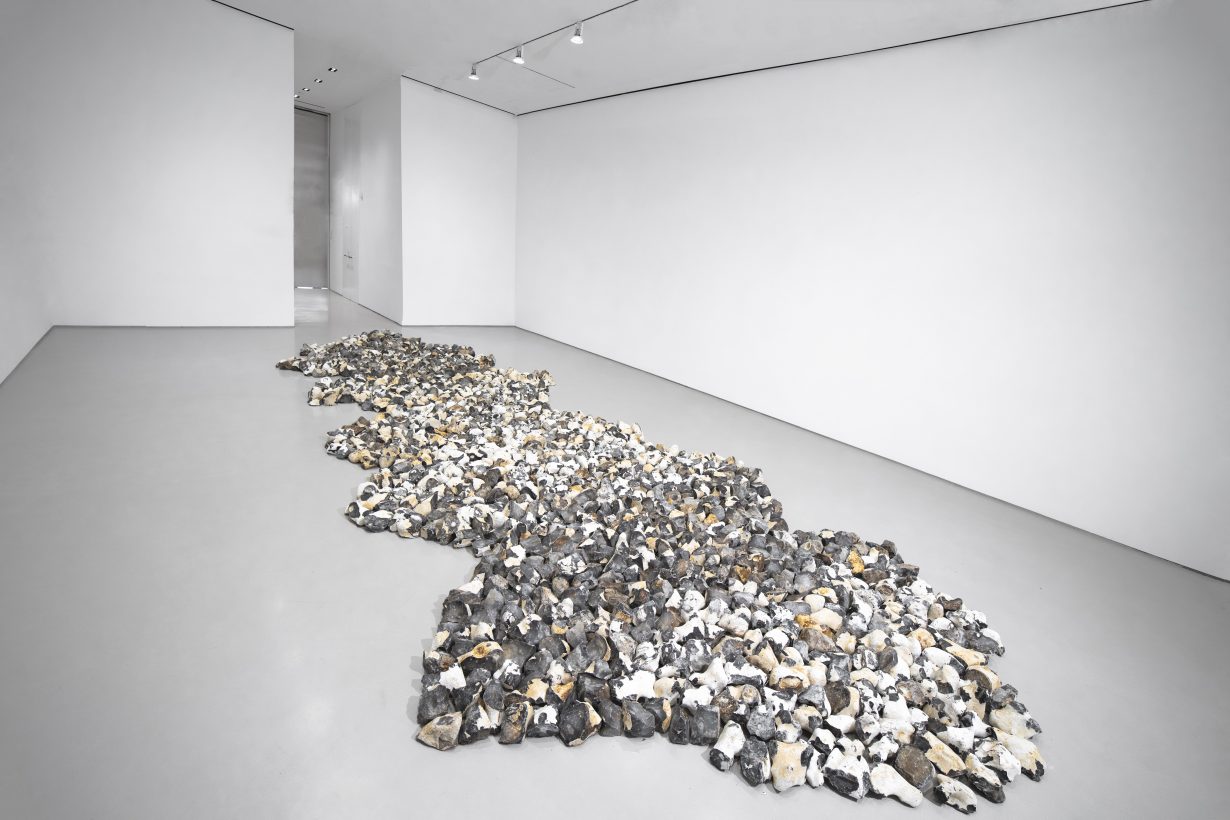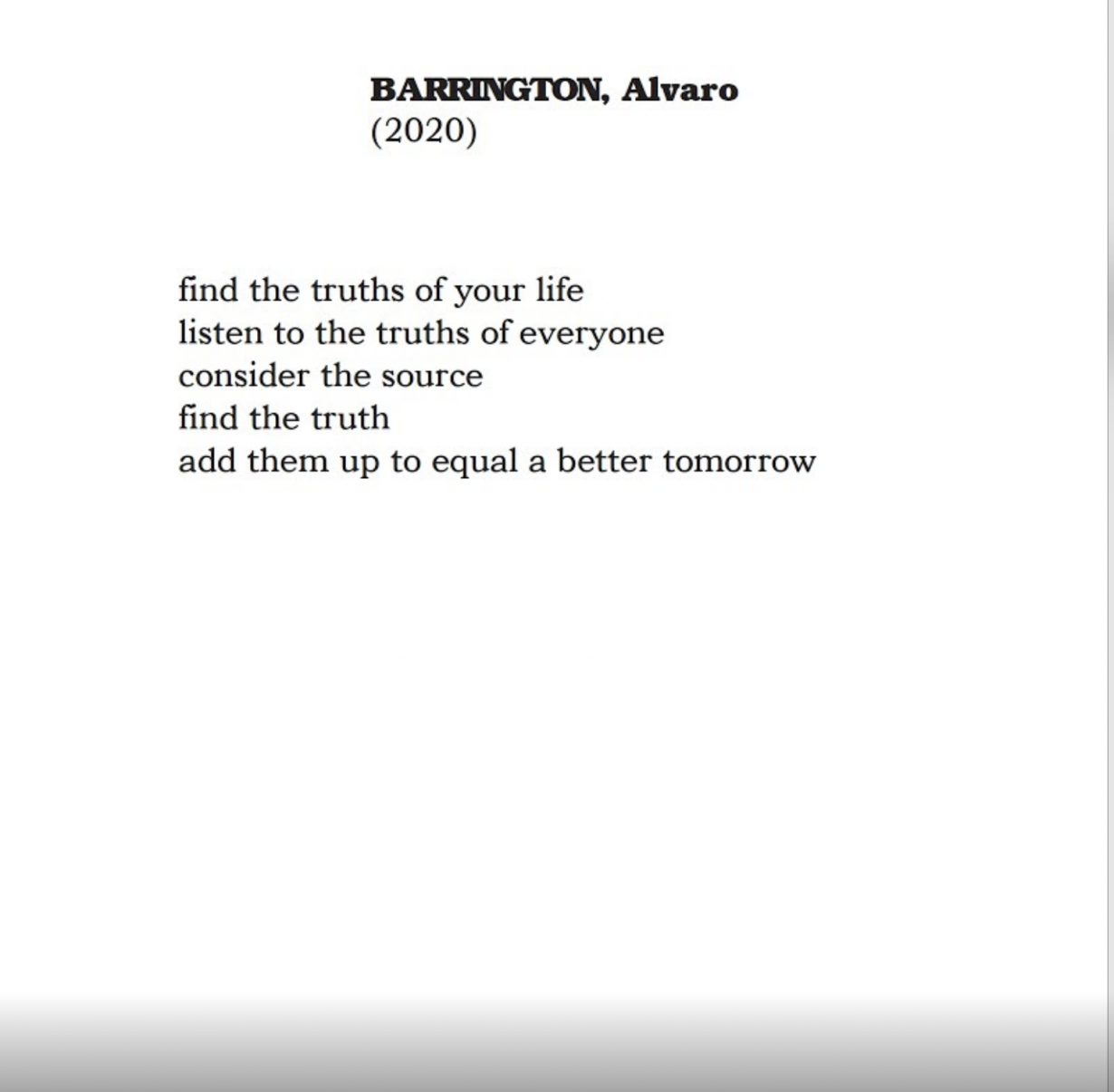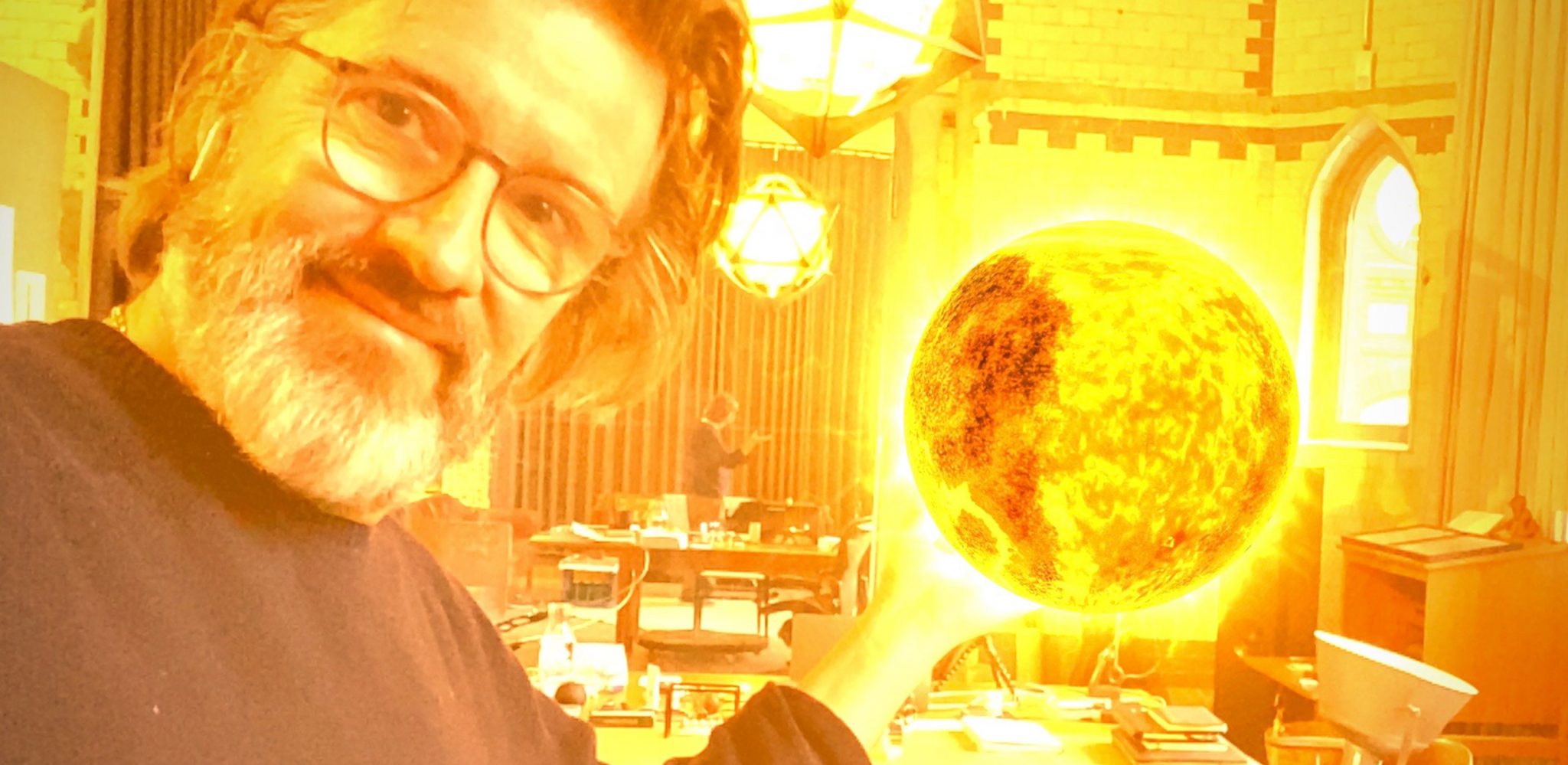From Hans Ulrich Obrist’s online edition of ‘Do It’ to Olafur Eliasson’s AR ‘Wunderkammer’, the stay-at-home artworld looks surprisingly conformist
I’m standing in Sperone Westwater’s tall, four-storey gallery in New York, looking at a walltext, Making a Circle of Stones (2019), by British artist Richard Long. Written in Long’s typically lapidary, haiku-like style, it reads:
MAKING A CIRCLE OF STONES
FLOATING BETWEEN QUARKS
AND GALACTIC CLUSTERS
ALONG A FIVE DAY WALK ON EXMOOR
Or rather: I’m not standing in Sperone Westwater’s tall, four-storey gallery in New York, but sitting in my cramped home office in Folkestone, experiencing the four storeys and Long’s show as an immersive 3D rendering. In an adjacent browser tab on my screen I’ve opened one of the artist-written contributions to the recently-launched Do-it (around the world). This isn’t the reissue of a long-lost Status Quo song, but the COVID-19-inspired reboot of curator Hans Ulrich Obrist’s interminable do it project (1993–), in which artists write conceptual-art-like instructions for the production of possible artworks or actions. The one I’m looking at reads (slightly redundantly, I think to myself, given the circumstances) ‘Practice stillness as a matter of urgency’.

In another browser tab is the webpage for Olafur Eliasson’s latest augmented-reality project Wunderkammer, in which Eliasson has produced virtual objects, related to the environment, which, through the magic of AR (and ownership of an up-to-date smartphone), you can place ‘in’ your surroundings – a sun hanging above you, a quizzical puffin hopping about on the floor, a raincloud gently precipitating (on command) over your desk, a large boulder next to your sofa. I’ve done it. And Elliason’s boulder, now sat by my window (a real window, that is, overlooking a car park), draws me back to the rocks I find on the third floor of Long’s New York exhibition. This is Meandering Flint Line (2020), a field of knapped flint nodules that have travelled from Norfolk in England. That distance seems like an incredible luxury now – VR advocates would like to think technology collapses distances between us, but the explosion of telepresence in the last few months has only served to emphasise how inaccessible other people and places have suddenly become.
Long’s art has often turned, often ambiguously, on the issue of how an experience (of the land, of the outdoors, of walking) might be described or abstracted in the space of the gallery. Using forms derived from Minimalism and from concrete poetry, his works are nevertheless anti-minimalist in inferring a sense of place that exists outside of them. Making a Circle of Stones, in this instance, requires the imaginative leap made possible by the written word to figure a sense of time and scale that is, by definition, excluded from the context of the urban, enclosed art gallery.
There’s therefore a whole set of paradoxes and ironies in viewing this and the stones of Meandering Flint Line; shipped from England to New York, and viewed, via a rendering, from an England in which few of us are allowed to travel. Of course, here in England, we’ve been told, over the course of the past week, that we can go out a (little) bit more now, but officialdom is now fretting that us town-dwellers are about to invade the country’s beauty spots, driving our polluting diesel cars, and probably infecting the locals with COVID-19 while we’re at it. Had he attempted one of his walks today, Long would no doubt get himself arrested. What once seemed mundane, now seems like the most radical of actions. Maybe it always was.
By contrast, staying indoors and making stay-at-home art is about as acquiescent as it gets. Perhaps it’s because of my seditious, restless annoyance at the experience of the lockdown – the economic carnage, the listless drift of politicians, the swift, unquestioned erasure of civil liberties in the name of public health, the irrational apocalypticism the media have helped foster in people – that I can’t see the stay-at-home art projects such a Do it and Elliason’s VR playthings as anything other than naïve and disingenuous.
For a culture supposedly defined by its nonconformism, the stay-at-home artworld looks surprisingly conformist. Institutions have done little but to try to make the confinement feel a bit nicer by unleashing a flood of video content, virtual visits, webinars and stuff-to-do-with-the-kids. Meanwhile, few artists have spoken up against lockdown, instead taking it as an opportunity to double down on their already-existing preoccupations, talking about the world ‘after’ COVID-19 as if the virus might bounce us into a post-capitalist utopia of zero-emissions, walk-to-work schemes and no air travel, full of emotional care and mindfulness. Eliasson tells us that ‘today, where physical distancing guides our lives, it’s as crucial as ever that we surround ourselves with things and atmospheres that really matter to us’. Invisible rocks are great, but they’re no substitute for being part of a functioning society. A do it instructs us to ‘find the truths of your life, listen to the truths of everyone, consider the source, find the truth, add them up to equal a better tomorrow’. No doubt people will appreciate the sentiment, but it amounts to little when they’re worrying about whether they’re going to lose their jobs. You can’t cook a virtual puffin.

Being OK with confinement shrinks horizons. Talking to yourself and your own social media echo-chamber, as many in the artworld have done for the last three months, hoping things will ‘go back to normal’ is no solution to a tanking economy. Taking a walk to a gallery, seeing art in situ (rather than making ‘confine-tainment’), is only one part of the informal life of society and a culture in which people are free to do things for themselves: to assemble, in private or in public, to look at artworks, or listen to music, or to protest. All that risks being lost in the coming months, not because of a virus, but because of our political and cultural response to it. ‘Virtual reality’ risks being the only kind of reality we’re left with; a dystopian closed loop of indoor hallucinations, of an outside about which we’ve forgotten.
Long’s Making a Circle of Stones isn’t an instruction to others, but a record of an individual choosing the course of their own actions. So – since we’re all artists – here’s my do it for the times, a proposal rather than an instruction:
Arrange to meet a friend in public
When you meet, shake hands or embrace
Take a chance on the consequences
